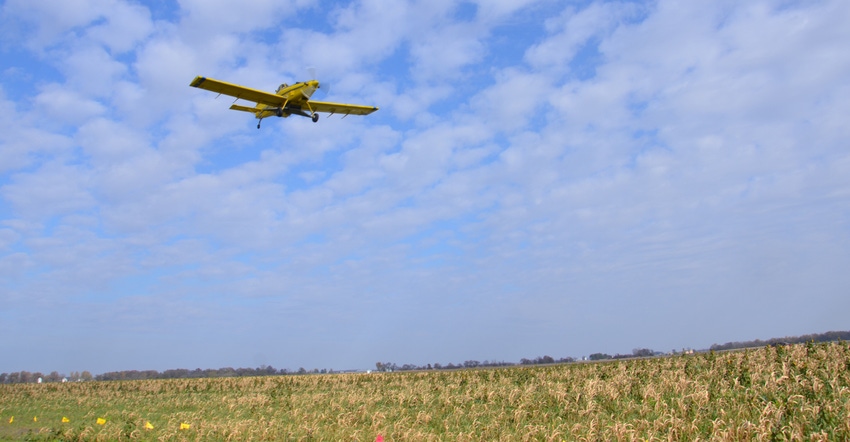July 9, 2018

My dad wants to hire a neighbor to apply cover crops in standing soybeans. I want to fly-on the seed. I think we’ll lose yield if we hire the neighbor because he runs over beans, and I think if leaves are still green, seed won’t make it to the ground anyway. Are my points valid?
The Indiana certified crop advisers panel answering this question includes Don Burgess, agronomist with A&L Great Lakes Labs, Fort Wayne; Jesse Grogan, agronomist with AgReliant Genetics, Lafayette; and Bryan Overstreet, Purdue University Extension ag educator in Jasper County.
Burgess: To successfully establish cover crops in a standing crop, it’s critical to maximize seed-to-soil contact. Make sure seed gets to the soil before leaf drop completely covers the surface. Even if cover crop seeds get caught in the soybean canopy, wind and rainfall will help dislodge seed from leaves. If seeding is delayed and occurs after leaf drop, seeds will fall onto residue rather than soil, and germination and stand establishment will be greatly reduced. However, seeding shouldn’t be done too early, or the emerging cover crop could compete with soybeans or cause issues with harvest.
The general rule of thumb is to seed when approximately 10% of leaves have dropped.
Broadcasting seeds with a ground spreader or a high-clearance sprayer with seeder will cause some yield loss due to wheel tracks. The amount will depend on spread width. Data from Purdue University indicates these losses could be from 1% to 5%, depending on spread or boom width. This should be factored in when determining the most economical way to seed, but timeliness of seeding should also be considered, due to the relatively narrow seeding window.
Grogan: Cover crop seed drilled at recommended seed depth is most effective for germination and establishment. It’s best to drill cover crops as soon as possible after harvest. However, there are several ways to seed a cover crop, and timing is important.
High-clearance sprayers have been effectively used in-crop just before leaves turn. It’s possible to fly-on or spread small-seeded cover crops like wheat, oats and cereal rye that can establish from the soil surface. Annual ryegrass can also be flown on at adjusted seeding rates. There are challenges for flying on cover crops, and an experienced pilot is important.
The best timing for applying in-crop is when crops are about to senesce so there is some sunlight to the ground.
Overstreet: The best timing is waiting until about 25% of leaves have started turning yellow. If you plant earlier, there may be too much shading to get a good stand. When deciding whether to hire your neighbor or fly it on, there are four things to think about:
1. How wide of equipment is he using? How many tracks will he make?
2. What is the row width of your beans? Are they drilled, 15-inch or 30-inch-row beans? Will the applicator always be running over a row?
3. What is the price difference in application methods? Calculate how much your yield will be impacted by driving through beans and compare that to the extra cost of aerial application.
4. Flying on seed offers more opportunities to plant if the ground is wet. Planting or flying on seed into standing soybeans can be challenging, but it can be done successfully if timed correctly and you get timely rains after planting.
You May Also Like




